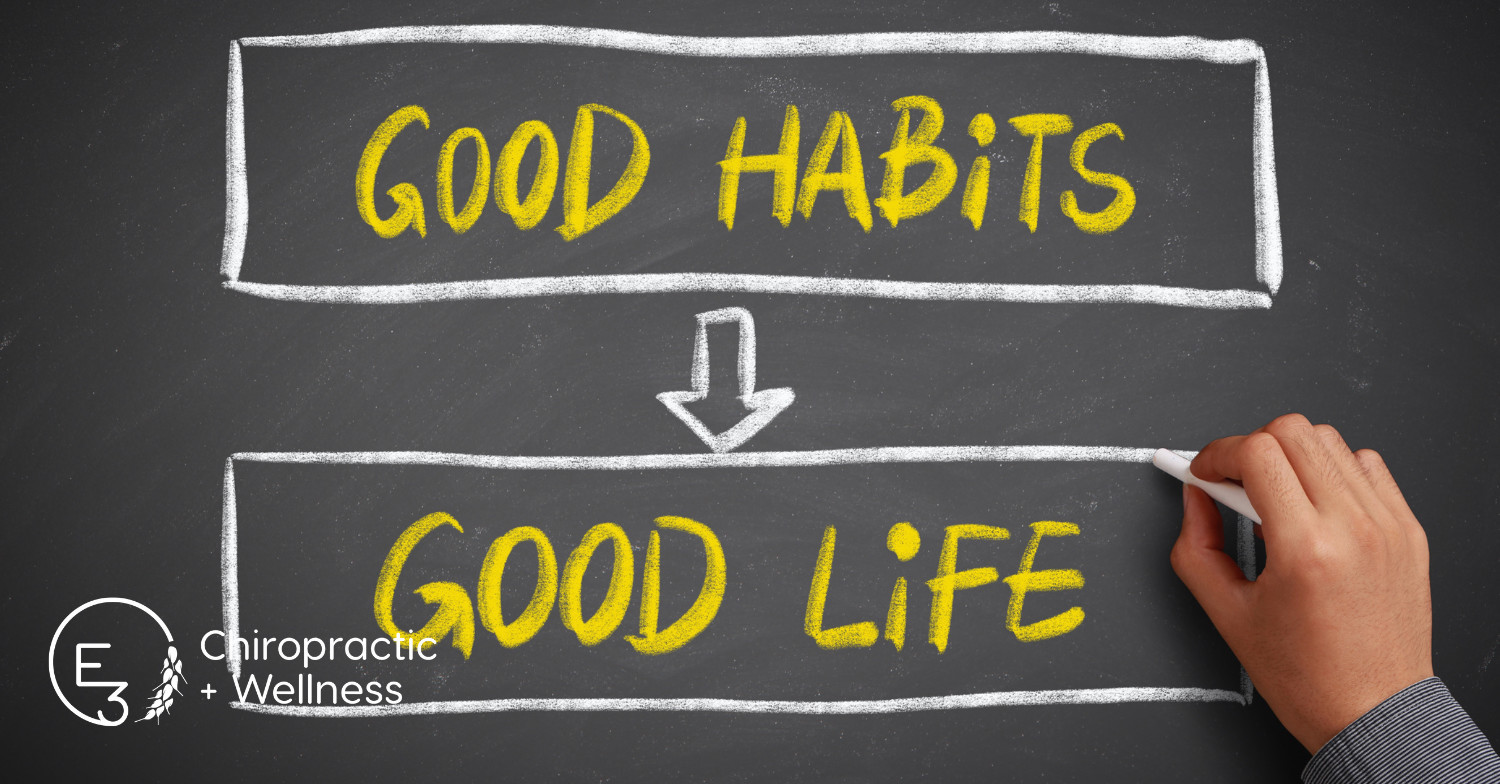
We all want to move better, feel stronger, and live without nagging stiffness or pain. But here’s the truth most people don’t want to admit—many of the aches, tightness, and mobility issues you deal with aren’t because you’re “just getting older.” They’re the direct result of small, repeated habits you do every day without thinking.
As a Saskatoon Chiropractor who works with active adults, I see this all the time at E3 Chiropractic + Wellness. Patients come in frustrated, saying things like:
“I stretch every morning, but my hips still feel tight.”
“I’ve been going to the gym, but my shoulders still can’t move properly.”
“I feel like my body is just wearing out.”
The truth? It’s often not about what you do for your health—it’s about what you keep doing to sabotage it. Let’s break down the daily habits that are secretly wrecking your mobility and what you can do instead.
1. Sitting for Hours Without a Break
We’ve all heard “sitting is the new smoking,” but it’s not the sitting itself that’s the real problem—it’s the unbroken sitting. When you’re glued to your chair for hours:
- Your hip flexors shorten and tighten.
- Your glute muscles weaken from lack of use.
- Your thoracic spine stiffens, limiting shoulder movement.
Even if you exercise after work, your body is still dealing with the fallout from 8+ hours of inactivity. This stiffness compounds over time, leading to reduced range of motion and higher risk of injury.
What to do instead:
Set a timer to stand, walk, or stretch for 2–3 minutes every 30–45 minutes. Even better, alternate between sitting and standing throughout the day.
2. Poor Posture—Especially When You’re “Relaxing”
Posture isn’t just something you should think about at your desk. The way you lounge on the couch, scroll on your phone, or read in bed can create the same problems as bad desk posture:
- Rounded shoulders from forward head posture.
- Increased kyphosis (upper back curve), reducing shoulder and rib cage mobility.
- Shortened pectoralis muscles and overstretched upper back muscles.
Over time, your body adapts to this “slouched” position, making it harder to stand tall or move freely without conscious effort.
What to do instead:
Check in with your posture during all activities—not just work. Support your back with a pillow, keep your screen at eye level, and vary your positions often.
3. Neglecting Your Warm-Up (or Doing the Wrong Kind)
Most people either skip warm-ups entirely or do a few quick toe touches and call it a day. But warming up properly is critical for joint health and mobility.
Without a targeted warm-up:
- Joints don’t get proper synovial fluid circulation (your body’s natural “joint lubricant”).
- Muscles remain cold and stiff, increasing risk of strains.
- Movement patterns are less coordinated, making exercise less effective.
What to do instead:
Use dynamic mobility drills to open up your joints before workouts—hip circles, thoracic rotations, and controlled leg swings are far better than static stretching before activity.
4. Only Training in One Movement Pattern
If you always move in the same ways—running forward, squatting up and down, or pressing overhead—you’re missing out on training your body in all three planes of motion:
- Sagittal Plane – forward and backward movement.
- Frontal Plane – side-to-side movement.
- Transverse Plane – rotational movement.
Neglecting multi-directional movement leads to imbalances and stiffness in underused joints.
What to do instead:
Incorporate lateral lunges, rotational core work, and side planks into your training. Your joints need to move in all directions to stay mobile.
5. Overstretching Without Strengthening
Here’s something that surprises a lot of people—flexibility and mobility aren’t the same thing. You can stretch all you want, but if your muscles aren’t strong enough to control that range of motion, your body won’t feel stable there.
For example:
- Stretching your hamstrings daily won’t fix tightness if your glutes are weak.
- Opening your shoulders won’t help if your upper back muscles can’t support the position.
What to do instead:
Pair every mobility drill with a strengthening exercise in that same range. For example, follow hip openers with loaded split squats, or pair thoracic extensions with rows.
6. Sleeping in Awkward Positions
If you wake up with stiffness every morning, your sleeping posture could be part of the problem. Twisting your spine, tucking your chin, or curling into a tight fetal position can keep your muscles shortened for hours, making you feel “stuck” when you wake up.
What to do instead:
Use pillows for support—between your knees if you’re a side sleeper, under your knees if you’re on your back. Keep your neck neutral with a pillow that supports your head without pushing it forward.
7. Ignoring the Little Aches and Stiffness
One of the biggest mobility killers isn’t an injury—it’s ignoring the warning signs before an injury happens. That little pinch in your hip? The tightness in your shoulders? They’re your body’s way of asking for attention.
When you push through or ignore these signs, compensations start to form. This means other joints take on extra stress, eventually leading to bigger, more painful problems.
What to do instead:
Address mobility issues early. Sometimes that means adjusting your daily habits, and other times it means working with a professional to find the root cause.
Why Mobility Matters More Than You Think
Good mobility isn’t just about moving well in the gym. It affects:
- How easily you can pick up your kids or groceries.
- How comfortable you feel during long drives or flights.
- Your ability to recover quickly after workouts.
- Your long-term joint health and independence as you age.
At E3 Chiropractic + Wellness, we see mobility as a foundation, not an afterthought. Our approach is about more than just relieving pain—we focus on finding why mobility issues are happening in the first place, fixing them at the source, and building the strength and stability you need to keep moving well.
How E3 Chiropractic + Wellness Can Help
If you’ve been dealing with stiffness, recurring aches, or just feel like your body doesn’t move the way it used to, we can help. Our Saskatoon Chiropractor team uses the E3 Approach:
Examine & Explain – We identify what’s limiting your movement and why it’s happening.
Eliminate Pain – We use hands-on care, soft tissue therapy, and adjustments to reduce discomfort.
Enhance Strength & Resilience – We create a plan to rebuild your body’s ability to move with confidence.
Whether you’re an athlete, a weekend warrior, or just want to keep up with life’s demands without pain, our goal is to help you move better for the long term.
Takeaway
Mobility isn’t something you lose overnight—it’s something you give away slowly through the small daily habits you repeat. The good news? You can start taking it back today by changing those habits and addressing your body’s needs before they turn into major problems.
If you’re ready to feel stronger, move better, and future-proof your joints, E3 Chiropractic + Wellness is here to guide you every step of the way. Click HERE to book a discovery call with us!





